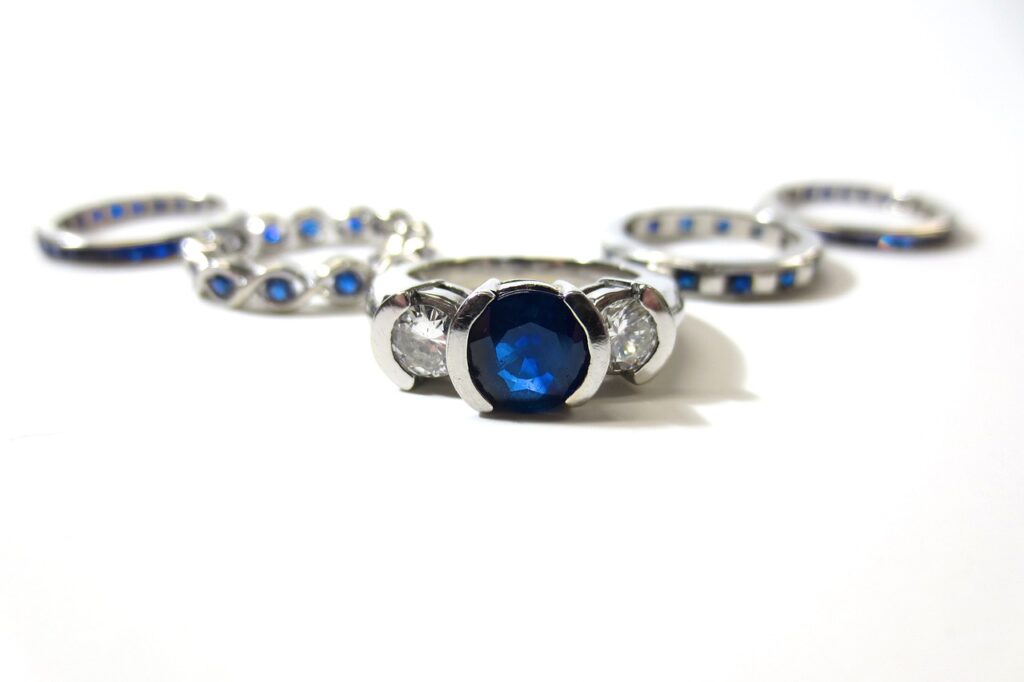Are you in the market for a new vacuum cleaner but feeling overwhelmed by all the options? Look no further, because we’re here to help you make a confident purchase decision. In this article, we’ll be comparing two popular types of vacuum cleaners: upright and canister. Whether you have a large, carpeted home or a smaller space with hard floors, we’ll break down the pros and cons of each style, giving you the expert insights you need to find the perfect vacuum cleaner for your cleaning needs. So, let’s jump right in and discover which type of vacuum cleaner is right for you!

Durability and Maneuverability
When it comes to the durability and maneuverability of a vacuum cleaner, there are some key factors to consider. Upright vacuum cleaners are known for their sturdy construction and are generally more durable compared to canister vacuum cleaners. They are designed to withstand regular use and can handle rougher surfaces without compromising their performance. On the other hand, canister vacuum cleaners are known for their compact and lightweight design, which makes them highly maneuverable. They can easily reach tight corners, under furniture, and stairs, making them a great choice for those who need to clean multiple surfaces.
Construction and Durability
Upright vacuum cleaners are built to withstand the wear and tear of regular use. They generally have a robust construction with a durable housing and strong motor. The upright design provides stability and allows for efficient cleaning on various surfaces. Some upright models also come with additional features such as a bumper guard to protect both the vacuum and your furniture from accidental bumps and collisions.
Canister vacuum cleaners, while not as sturdy as upright models, are still designed to be durable. They are often made with high-quality materials that can withstand everyday use. The canister itself is typically lightweight and easy to maneuver, making it a suitable choice for those who need to clean different areas of their homes regularly.
Maneuverability and Flexibility
Upright vacuum cleaners are known for their ease of use and maneuverability. They typically have a single unit that is pushed along the floor, making it easy to navigate around furniture and obstacles. The swiveling head of an upright vacuum allows for smooth turns and precise cleaning. Most upright models also come with a flexible hose and attachments for cleaning tight spaces and above-floor areas.
Canister vacuum cleaners excel in maneuverability due to their lightweight and portable design. The canister can be easily carried around, allowing you to reach areas that are difficult to access with an upright vacuum. The flexible hose and attachments enable you to clean stairs, upholstery, and other surfaces effortlessly. With a canister vacuum, you can effortlessly move from room to room without any hassle.
Cleaning Performance
The cleaning performance of a vacuum cleaner is crucial in ensuring that your floors are thoroughly cleaned. Both upright and canister vacuum cleaners have their strengths and weaknesses when it comes to cleaning performance.
Suction Power
Upright vacuum cleaners often have more powerful motors and larger brush rolls, resulting in stronger suction power. This makes them highly effective at picking up dirt, dust, and debris from different floor types, including carpets and hard floors. The brush roll agitates the carpet fibers, loosening dirt and pet hair for deep cleaning. Upright models also tend to have better airflow, which enhances their overall cleaning performance.
Canister vacuum cleaners, though not as powerful as upright models, still offer excellent cleaning performance. They are equipped with a motorized brush head or a power nozzle that effectively removes dirt and dust from carpets. The adjustable suction power allows you to clean delicate surfaces without causing any damage. Canister vacuums are also adept at cleaning hard floors, thanks to their versatile attachments and brush heads.
Filtration System
Both upright and canister vacuum cleaners come with different types of filtration systems to ensure that the air expelled is clean and free from allergens. Most models feature a multi-stage filtration system that includes a HEPA filter to capture small particles and allergens. This is especially important for people with allergies or respiratory issues.
Some upright vacuum cleaners also have advanced filtration systems, such as a sealed system or charcoal filters, to further improve air quality. These features help trap and eliminate unpleasant odors, making your home a healthier and more pleasant environment.

Floor Type Compatibility
Choosing a vacuum cleaner that is compatible with your floor type is essential to ensure efficient and effective cleaning. Both upright and canister vacuum cleaners have their advantages and are suitable for different types of flooring.
Carpet Cleaning
Upright vacuum cleaners are widely regarded as the go-to option for carpet cleaning. Their powerful suction, coupled with the rotating brush roll, can effectively remove deep-seated dirt and pet hair. The bristles of the brush roll agitate the carpet fibers, loosening dirt and debris for better cleaning results. Upright models often have adjustable height settings to accommodate different carpet pile heights, ensuring optimal cleaning performance.
Canister vacuum cleaners, however, are also capable of cleaning carpets. They come with motorized brush heads or power nozzles that effectively agitate and clean the carpet fibers. Some canister models even have specialized carpet cleaning attachments, such as turbo brushes or electric powerheads, for enhanced performance. Canisters with adjustable suction power are ideal for delicate carpets or rugs.
Hardwood and Tile Cleaning
Upright and canister vacuum cleaners are both suitable for cleaning hard floors such as hardwood, laminate, and tile. However, each type has its own advantages when it comes to this specific floor type.
Upright vacuum cleaners with a brush roll feature are effective at picking up dirt, dust, and debris from hard floors. The bristles agitate the surface, dislodging particles for easy suction. Some upright models also have a switch that allows you to turn off the brush roll to prevent scratching or scattering debris on delicate surfaces.
Canister vacuum cleaners are also excellent at cleaning hard floors. They often come with specialized attachments such as a hard floor brush or a combination floor tool that is gentle on delicate surfaces. The canister design allows for greater maneuverability, making it easier to clean large areas without straining your back.
Filtering System
A vacuum cleaner’s filtering system is crucial in maintaining good indoor air quality and capturing allergens and dust particles. Both upright and canister vacuum cleaners come with different types of filtration systems to cater to various needs.
HEPA Filtration
HEPA (High-Efficiency Particulate Air) filters are a standard feature in many vacuum cleaners, including both upright and canister models. These filters are designed to capture fine particles like dust, pollen, pet dander, and even some bacteria and viruses. HEPA filters are particularly effective for individuals with allergies or asthma, as they can significantly reduce airborne allergens.
It’s important to note that not all vacuum cleaners labeled as “HEPA” are created equal. Look for models that have been certified by independent testing agencies to ensure the filter meets the required standards for capturing small particles. Additionally, consider vacuum cleaners with sealed filtration systems, as they prevent allergens from being released back into the air during operation.
Advanced Filtration Systems
In addition to HEPA filters, some vacuum cleaners offer advanced filtration systems for improved air quality. For instance, certain upright models may come with a sealed system that ensures all the air passes through the filtration system, minimizing the chances of allergens escaping. These sealed systems are particularly beneficial for individuals with severe allergies or asthma.
Other advanced filtration features include charcoal filters that help eliminate odors, activated carbon filters that absorb harmful gases, and washable filters that can be reused, reducing long-term costs. Evaluate your specific needs and consider these advanced filtration options to enhance the air quality in your home.

Dust Capacity
The dust capacity of a vacuum cleaner refers to how much dirt and debris it can hold before needing to be emptied. The size of the dustbin or bag plays a significant role in determining the vacuum’s convenience and how frequently you would need to empty it.
Bagless vs. Bagged
Upright and canister vacuum cleaners are available in both bagless and bagged models, each with its own advantages.
Bagless vacuum cleaners have a transparent dustbin that allows you to see when it’s time to empty it. This can be particularly convenient, as you won’t have to guess when the bin is full. Bagless models also eliminate the need to purchase replacement bags, saving you money in the long run. However, emptying a bagless dustbin can be messy, especially if you’re sensitive to dust or allergens.
Bagged vacuum cleaners, on the other hand, use disposable bags to collect dirt and debris. These bags can often hold a significant amount of dirt before needing to be replaced, which means less frequent emptying. Bagged models tend to be more hygienic, as the bag seals the dirt inside, preventing dust and allergens from escaping. However, you will need to purchase replacement bags regularly, which adds to the overall cost of using a bagged vacuum cleaner.
Consider your preferences, convenience, and budget when deciding between bagged and bagless options.
Dust Capacity and Cleaning Frequency
The dust capacity of a vacuum cleaner is directly related to how often you will need to empty it during your cleaning sessions. Larger dustbins or bags can hold more dirt and debris, allowing you to clean for longer periods before requiring emptying.
If you have a larger home or frequently need to clean a significant amount of debris, opt for a vacuum cleaner with a higher dust capacity. This will prevent interruptions during your cleaning routine and save you time and effort. However, keep in mind that larger dustbins or bags can contribute to the overall weight of the vacuum, making it slightly more challenging to maneuver.
If you have a smaller space or prefer lighter-weight options, you can choose a vacuum cleaner with a smaller dust capacity. This will require more frequent emptying but may make up for it with enhanced maneuverability and ease of use.
Noise Level
The noise level of a vacuum cleaner is an important consideration, especially if you live in an apartment, have young children, or prefer a quieter cleaning experience. Both upright and canister vacuum cleaners vary in terms of noise production.
Noise Levels and Performance
Upright vacuum cleaners, particularly those with powerful motors, tend to produce more noise compared to canister vacuum cleaners. This is because the upright design often allows for a more direct path of air and sound, resulting in higher noise levels. However, manufacturers have made significant advancements in noise reduction technology, and many modern upright models now have reduced noise levels.
Canister vacuum cleaners generally produce less noise due to their design, as the motor is located away from the user’s ears. The canister acts as a buffer, reducing the noise during operation. However, keep in mind that noise levels can still vary depending on the specific model and motor power.
It’s a good idea to check the noise level specifications provided by the manufacturer before making a purchase. Look for models that offer quiet operation without compromising cleaning performance. Some vacuum cleaners also come with noise reduction features, such as insulation or additional filters that dampen the sound.
Price
Price is often a decisive factor when it comes to purchasing a new vacuum cleaner. Both upright and canister vacuum cleaners come in a wide range of prices, offering options for different budgets.
Upright Vacuum Cleaner Prices
Upright vacuum cleaners can vary significantly in price depending on the brand, features, and performance. While basic models can be relatively affordable, more advanced upright vacuum cleaners with additional features and superior cleaning performance tend to be pricier.
Factors that can affect the price of an upright vacuum cleaner include the motor power, filtration system, brush roll quality, included attachments, and overall build quality. Higher-priced models often offer more durability, superior suction power, and advanced filtration systems, which can be beneficial for those with specific cleaning needs.
Canister Vacuum Cleaner Prices
Canister vacuum cleaners also come in a wide range of prices, offering options for various budgets. Basic canister models are generally more affordable compared to upright models, making them an attractive choice for those looking to save money.
Higher-priced canister vacuum cleaners often offer more advanced features such as more powerful suction, better maneuverability, and additional attachments. The build quality, motor power, filtration system, and overall performance can all affect the price of a canister vacuum cleaner.
Consider your budget and specific cleaning requirements when choosing between different price ranges. It’s important to strike a balance between affordability and the features that are important to you.
Conclusion
In conclusion, choosing between an upright and a canister vacuum cleaner depends on your specific cleaning needs and preferences. Upright vacuum cleaners are known for their durability, strong suction power, and excellent carpet cleaning performance. They offer stability and maneuverability, making them a reliable choice for tackling different surfaces. Canister vacuum cleaners, on the other hand, excel in maneuverability and portability. They are lightweight and versatile, making them ideal for cleaning multiple areas and hard-to-reach places.
Consider factors such as floor type compatibility, cleaning performance, filtration system, dust capacity, and noise level when making your decision. Assess your specific cleaning requirements, such as the types of floors you have, whether you have allergies or pets, and the size of your home. Additionally, take your budget into consideration to find the right balance between affordability and the features you require.
By considering these factors and understanding the differences between upright and canister vacuum cleaners, you can make an informed decision that will result in a cleaner, healthier home. Happy cleaning!




